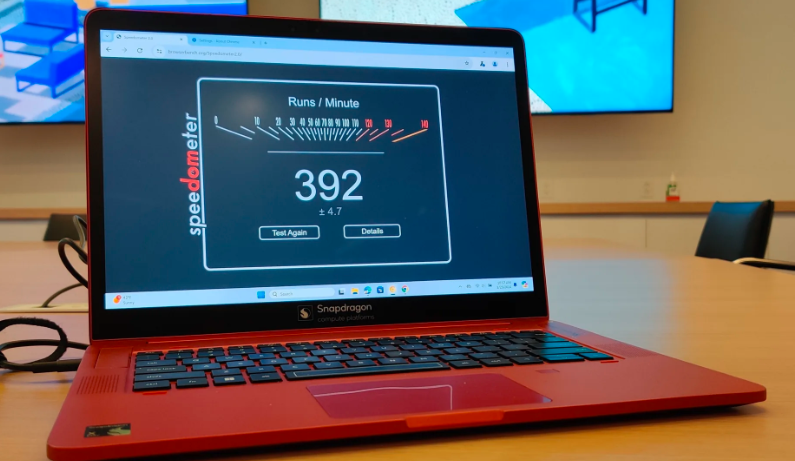
Snapdragon-based laptops have been a topic of discussion for several years now, with their popularity fluctuating from time to time. However, until recently, they haven’t been widely available in the market. There are several reasons for this, one of which is the performance of Snapdragon laptop chips. Moreover, the introduction of native-running applications for Windows on Arm has been staggered, with some significant applications still relying on emulation to work on the platform. Although progress has been made, some critical programs are missing, and there is no wave of apps that have arrived all at once. Therefore, the narrative remains the same, with just a few laptops here and there, and no critical mass of Snapdragon-based laptops emerging in the market.
There are exciting developments coming up in the world of computer processors. Qualcomm, a leading technology company, has announced its upcoming Snapdragon X Elite platform, also known as “Oryon.” This platform features a powerful flagship processor that can match the performance of chips from the Intel/AMD duo, designed specifically for thin-and-light laptops. In fact, Qualcomm has already demonstrated the impressive capabilities of this platform in reference-design laptops.
Microsoft is expected to unveil a new line of laptops and 2-in-1s based on the Snapdragon X Elite platform at an event in May, prior to its Build conference. This follows Microsoft’s recent Surface for Business event, which focused solely on Intel products. It is worth noting that Qualcomm’s laptop chips have been most commonly used in the Surface family of laptops to date.
Qualcomm has also promised that other PC partners will release Snapdragon X Elite-based laptops by mid-2024. Cristiano Amon, Qualcomm’s CEO, will deliver a keynote speech at the Computex 2024 trade show in June, which could be an ideal opportunity to launch these new products.
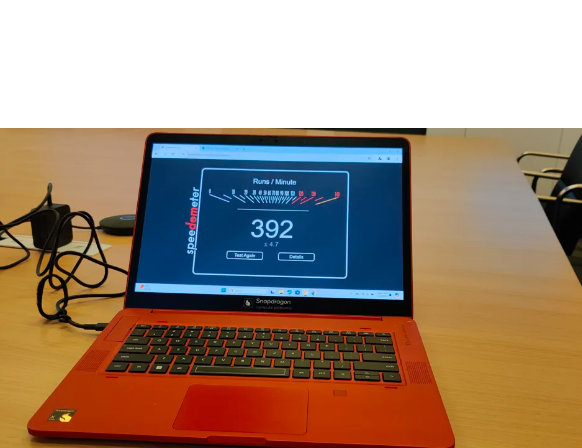
Chrome, the popular web browser, has been absent from Windows on Arm for a long time. Although Microsoft’s Edge and Firefox have native versions for Snapdragon, Chrome has only just released a Snapdragon-optimized version. This is a significant development for Snapdragon PC users and those interested in Qualcomm laptops. Emulated Chrome’s browser performance, as measured by in-browser benchmark tests, has not been favorable to Snapdragon. Since Chrome has a global market share of more than 60%, its absence was a big deal in the Windows-on-Arm world. With the release of a Snapdragon-optimized Chrome, the puzzle pieces are finally falling into place.
Ahead of this Chrome release, in a short demo in New York City, we got a chance to check out a build of the Snapdragon-optimized version on one of Qualcomm’s reference machines. We were able to oversee a handful of browser-based benchmarks (one of Qualcomm’s choosing, and two of our own). TLDR? Chrome is getting a lot faster on Snapdragon. Here’s how the numbers shook out.
Testing the New, Optimized Chrome on Snapdragon X Elite
Qualcomm came by PCMag’s offices with a Windows 11-based Snapdragon X Elite reference-design laptop. It was pre-configured with the latest public version of the Chrome and Microsoft Edge browsers, as well as an advance build of the Snapdragon-optimized version of Chrome (125.0.6378.0). That version should start appearing today as a download option for some Snapdragon laptop users (more on that in a bit).
Speedometer 2.0
We began the test with the Speedometer 2.0 browser-based benchmark. Although there is a newer 3.0 version of this benchmark, its results on various platforms require further investigation and context. We conducted the test on three different browsers – Microsoft Edge (which has a native version for Snapdragon), non-optimized Chrome, and the advanced Snapdragon-optimized Chrome, which was released today.
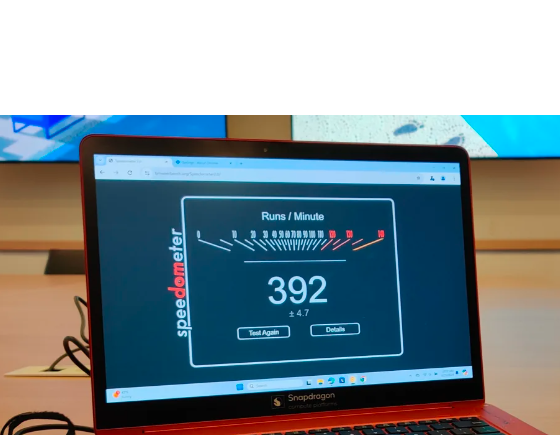
For a little cross-platform spice, later in the day, we ran these same tests on an Asus ZenBook 14 Q425M Windows 11 machine equipped with Intel’s Core 7 Ultra 155H. Qualcomm says the 155H is the closest comparable chip to the Snapdragon X Elite in Intel’s initial line of AI-equipped laptop processors, dubbed “Meteor Lake.”
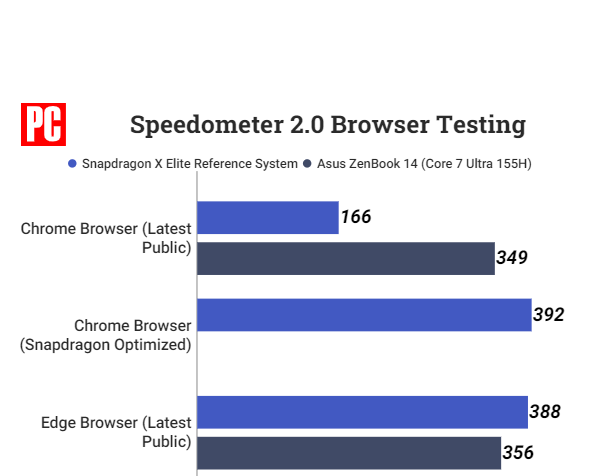
The key takeaway here is not that the ready-for-Snapdragon Chrome is outperforming the Edge browser by some gaudy margin (it doesn’t), but that Chrome is now performing at rough parity to Edge. Using the last non-optimized version of Chrome, as you can see in the chart, the Snapdragon X Elite was delivering well less than half of the performance in this benchmark.
It’s worth noting the performance of Core 7 Ultra, although it’s important to keep in mind that browser benchmarks may not be indicative of raw computing power when performing tasks such as video rendering or photo editing. However, Qualcomm’s reference system, with optimized Chrome and native Edge, outperforms the ZenBook 14 by around 10% on the browsers we tested, depending on the specific comparison.
JetStream 2
Next up, we chose the stalwart JetStream 2 test. This test concentrates on JavaScript and WebAssembly, and rewards quick starting and execution of code.

We ran the same permutations: the test on Microsoft Edge, on the non-optimized Chrome browser, and on the Snapdragon-optimized Chrome browser. We also kept the Asus Core 7 Ultra system in the mix…
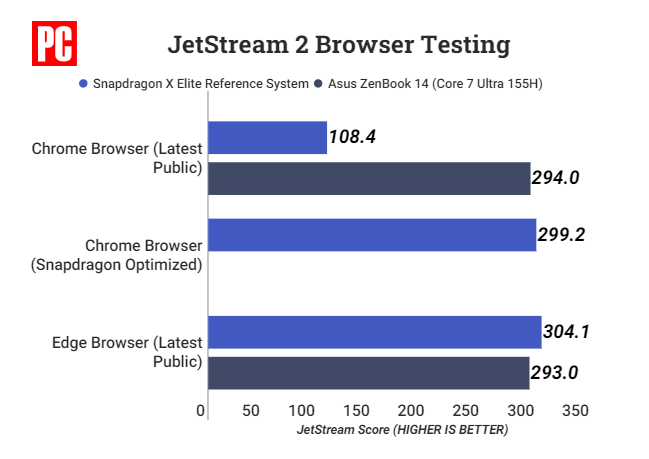
We observed a nearly threefold improvement in the score on the Snapdragon system by switching from the current non-native Chrome browser to the optimized version of Chrome. This upgraded score also resulted in the Snapdragon device’s performance reaching a practical margin-of-error tie with its own JetStream performance in Edge, as well as with the Intel Meteor Lake laptop’s performance on both browsers.
Basemark Web 3.0
Last up was Basemark Web 3.0, which also emphasizes JavaScript performance.
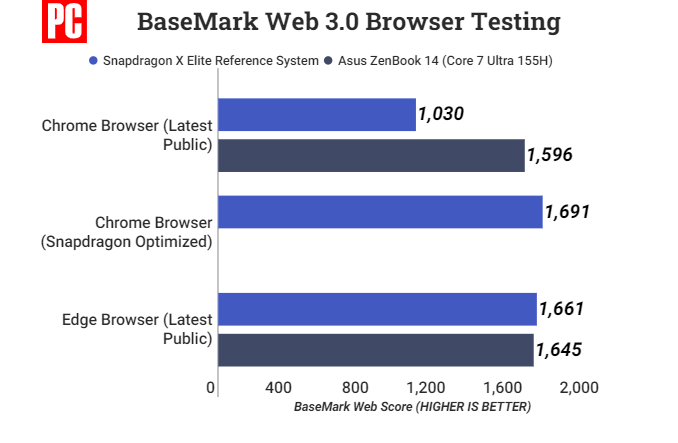
On the Snapdragon system, the new-vs.-old Chrome advantage was not quite as drastic as in the other tests, but we still saw a 64% bump from the current version of the Chrome browser to the optimized one. The new Chrome also brought the Snapdragon system right in line with its performance on Edge, and it slightly outpaced the Core 7 Ultra PC’s showings.
Here Comes the Big One
What to make of an amped-up Chrome coming to Snapdragon? Don’t think of it as a shiny new rocket; it’s just now performing as it should have been all along. It won’t be turbocharged, in a relative sense, versus Edge; it’ll only be significantly faster than the non-optimized Chrome, which means this release essentially gets the big browser up to speed and 2024 spec.
It’s a significant development in the Snapdragon space, but its overall impact will only become clear in the next six months or so. It’s worth noting that there are obvious synergies between Android and the Chrome browser, which is great news for Android phone users. The ability to seamlessly sync your Google-based life across your phone and laptop is one of the primary reasons why many Windows/Android/Chrome loyalists prefer these platforms. However, some users may have been hesitant to adopt a Snapdragon-based laptop due to the sluggish performance of previous Snapdragon laptops, combined with Chrome’s particular shortcomings under Snapdragon. The latest developments in Chrome and the upcoming X Elite chips may offer a solution to these issues.
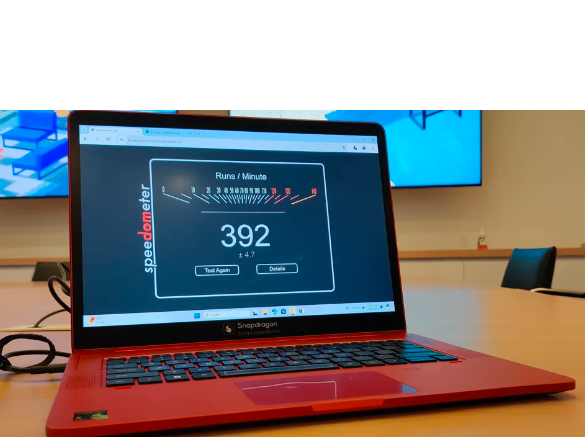
In the grand scheme of things, the success of this software will ultimately depend on how many Snapdragon PCs actually make it to market and are purchased by consumers in 2024 and beyond. Over the next few months, we will discover how many design wins Qualcomm has secured with Snapdragon X Elite, as well as assess the level of interest in a Snapdragon laptop push. We will thoroughly test the first X Elite laptop configurations, not just with browser-based tests, but also with our classic raw-performance benchmarks that evaluate the types of demanding and everyday workloads that many of us use outside of a browser.
How to Get the New Chrome (and Know You Got It)
A version of Chrome optimized for Snapdragon is set to be released by Google today. This version will be available as an “experimental” browser and can only be downloaded on late-model Snapdragon-based laptops. However, the download option may not appear immediately as Google will be gradually rolling out access to the new browser version to balance the load.
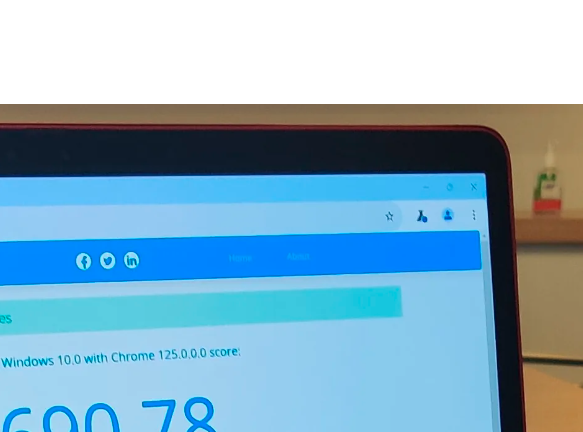
Once you have the new version installed, you should see a chemist’s flask in the upper right of the screen, indicating the experimental version. Also, the About Google Chrome page in the browser should indicate a version that says “arm64” at the end.
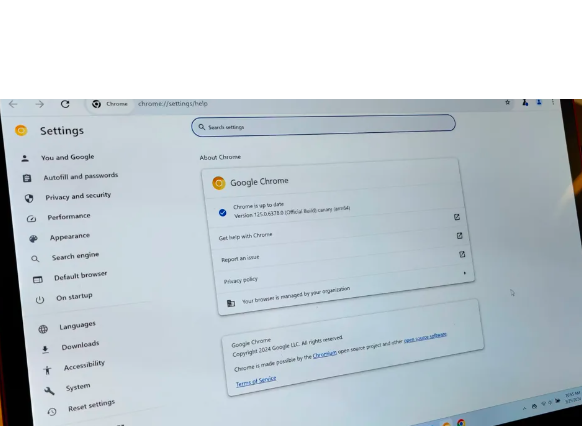
With some persistence, you should be able to get the optimized version of Chrome onto your ThinkPad X13s Gen 1, Surface Pro 9, or other Snapdragon machine in short order, and judge for yourself if the biggest browser finally going native changes your computing world. It’s a nice bonus for those who have been faithful to their Windows on Arm PCs, and table stakes for Qualcomm when its Snapdragon X Elite laptops start to hit the streets.












